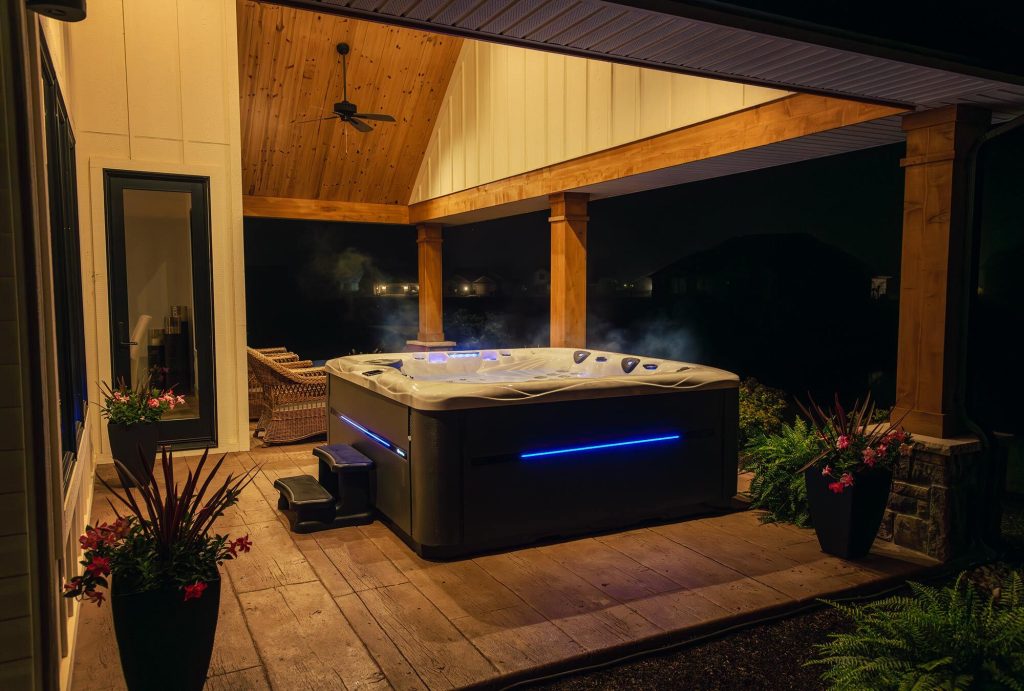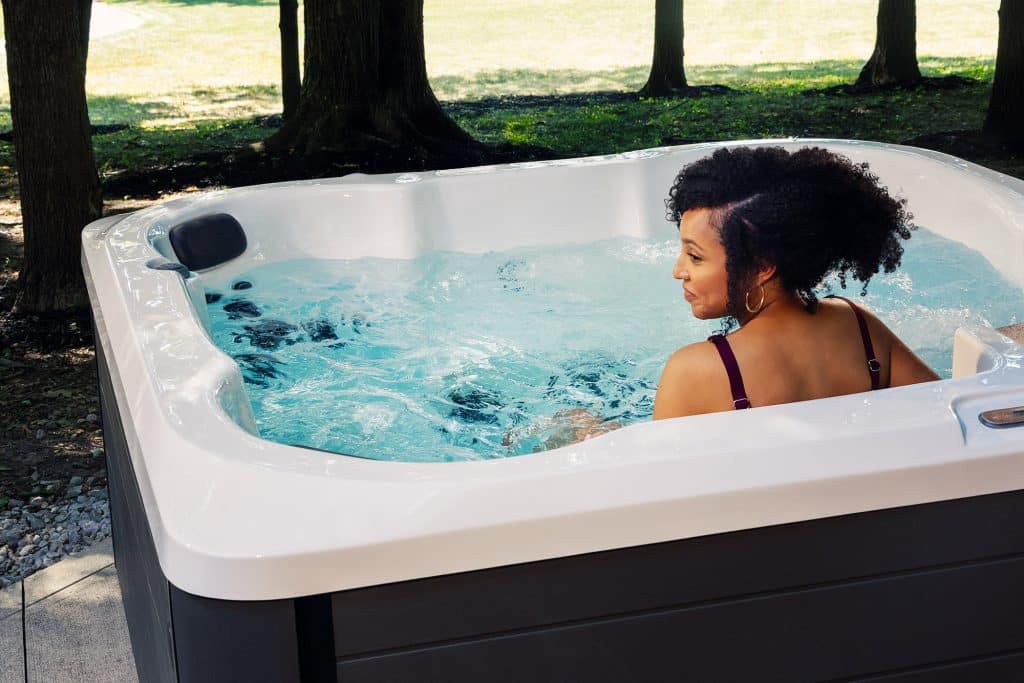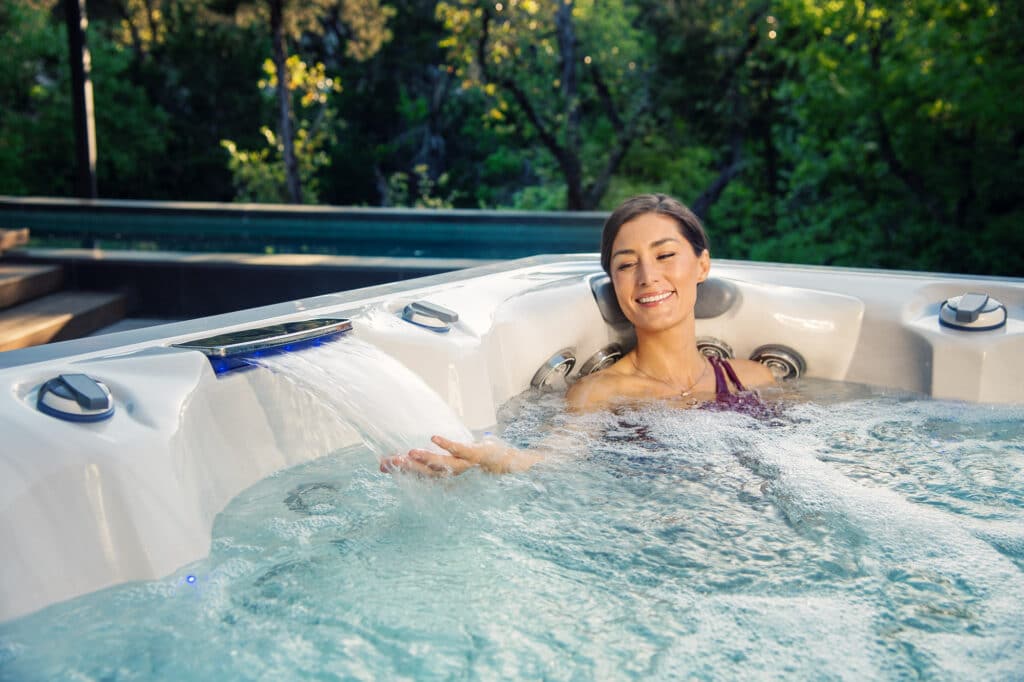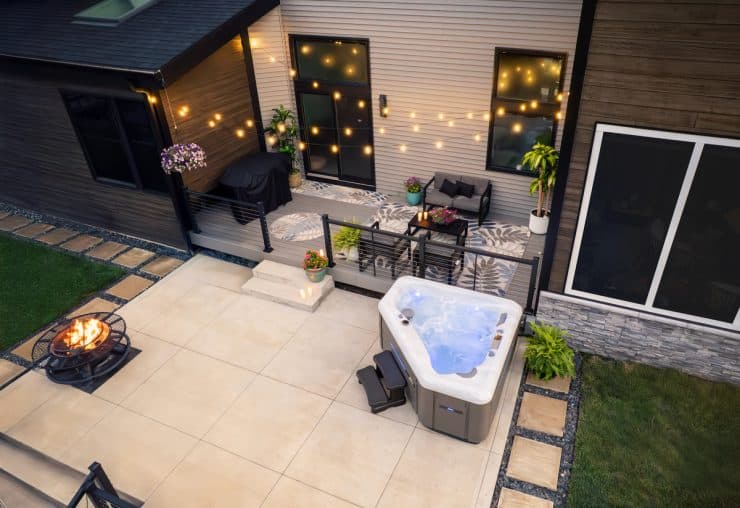How much does a hot tub cost?
It’s the first question most people type into the search bar when they begin shopping for a spa. Understandably so — a hot tub isn’t an everyday purchase. As you begin to explore your options, one of the first things you’ll notice is just how wide the price range can be, which can feel confusing when you’re starting out.
You might see models online listed for just a few thousand dollars. At the same time, a local dealer may show you hot tubs starting closer to $10,000 or $12,000. Then there are the warehouse deals that make the price gap look even bigger. It leaves many first-time buyers wondering: Why is there such a difference? And what does a hot tub really cost?
The truth is, hot tub prices aren’t one-size-fits-all. Much like buying a car or even a mattress, there’s a spectrum — from budget big-box models to premium, luxury spas.
Understanding where those numbers come from, and what they mean for your ownership experience, can help you make a choice that feels good not just today but for years to come.

Average hot tub price
Hot tubs can range anywhere from about $4,000 to more than $25,000. That’s a big window, and it’s understandable that it can make someone overwhelmed when buying a backyard spa.
But most shoppers looking for a reliable, long-lasting spa will land in the $10,000 to $17,000 range. In this middle ground, you’ll find a balance of quality construction, energy efficiency, and the hydrotherapy benefits that make hot tub ownership worthwhile.
Think of it this way: You can buy a budget car that gets you around town, or you can buy a well-built vehicle designed to last longer and deliver a better driving experience. Hot tubs work the same way.
What drives the cost of a hot tub?
Hot tub prices aren’t arbitrary. They reflect the materials, design, and technology built into the spa.
Size and seating
A two- or three-person spa will typically cost less than a seven-person hot tub with multiple therapy seats. More space means more pumps, more jets, and more overall power.
Materials and construction
Budget hot tubs might be built with lightweight shells and minimal insulation. A reputable hot tub manufacturer will use durable acrylic shells, reinforced frames, and layered insulation to keep heat in and energy bills down.
Features and technology
LED lighting, waterfalls, Bluetooth speakers, and advanced control panels add to the upfront cost but also to the day-to-day enjoyment. Upgraded water care systems, such as a hot tub salt system, can reduce the need for chemicals and simplify maintenance.
Energy efficiency
A hot tub designed to run efficiently may cost more upfront, but it can save you $20 to $50 a month in utilities compared to less efficient models. When comparing spas, pay attention to the details that make the difference: a well-insulated cabinet, a quality spa cover that seals in heat, and thoughtful design that keeps energy use low.
Brand reputation and support
When you buy from a trusted brand with a local dealer network, you’re also paying for service and support. That peace of mind can make the difference between years of stress-free ownership and frustration if something goes wrong.

Entry-level, mid-range, and premium hot tubs
Breaking hot tubs into categories helps give a clearer picture of what you get for your money:
Budget hot tubs ($4,000-$8,000)
These are often plug-and-play models that run on a standard household outlet. They’re compact, easy to set up, and provide basic hydrotherapy. However, they may lack insulation, advanced features, and the long-term durability of higher-quality spas.
Entry-level hot tubs ($10,000–$16,000)
This is the “sweet spot” for many first-time buyers. Entry-level dealer models typically offer more seating, better insulation, and features like improved water systems and intuitive controls. They’re designed for families and individuals who want a balance of comfort, reliability, and value.
Mid-range hot tubs ($17,000–$10,000)
Mid-range spas step up in both size and performance. You’ll often find multiple therapy seats, advanced massage options, and upgraded technology that makes water care simpler. These hot tubs are ideal for households that want more variety, comfort, and efficiency without moving into luxury-tier pricing.
Premium hot tubs ($20,000+)
Premium spas deliver the best of everything: luxury design, powerful hydrotherapy, multiple massage seats, and advanced water care technology. They’re built with longevity in mind and can provide decades of enjoyment with proper care.
Why are some hot tubs so much cheaper?
If you’ve browsed online or walked past a warehouse display, you’ve probably noticed that some hot tubs seem significantly less expensive. So why the gap?
The lower price usually comes down to three things: materials and insulation, simplified components, and mass production.
Materials and insulation
Lightweight shells and minimal insulation can make a hot tub look like a bargain. But these shortcuts often create long-term problems. A thin shell that isn’t reinforced is more prone to cracking — especially if the spa is placed on an uneven surface. Instead of high-density foam insulation, the cabinet might simply be wrapped, which means more heat loss, higher utility bills, and a shorter lifespan.
Simplified components
Budget spas often feature fewer jets, smaller pumps, and basic control systems. While this keeps the sticker price down, it also means you may not get the hydrotherapy power or customizable massage experience that many buyers are looking for.
Mass production
Spas made for bulk sales are designed to move quickly, not to be supported long term. That can mean limited access to parts, difficulty filing warranty claims, and little to no delivery or setup service. For first-time buyers, the lack of support can be frustrating when questions or maintenance issues come up.
The ongoing cost of a hot tub
A hot tub’s sticker price is just one part of the equation. Ownership comes with ongoing costs you’ll want to factor into your budget:
Water care: Supplies to keep your water clean and safe typically cost a modest amount each month. Advanced systems can lower this cost.
Energy use: Well-insulated spas may add $20–$30 to your monthly bill, while less efficient models can cost much more.
Service and maintenance: Routine care helps avoid costly repairs down the line. Working with a local dealer makes this easier.
Finding the right hot tub for your budget
Shopping for a hot tub can feel like information overload. But focusing on your priorities makes the decision easier.
Why do you want a hot tub? Relaxation? Family time? Pain relief?
How will you use it? Daily soaks, weekend gatherings, or recovery after workouts?
What space do you have? Measuring your backyard or patio will help narrow down the right size.
What budget feels comfortable? Remember to include installation and ongoing costs.
Most importantly, visit a local showroom if you can. Sitting in different models, asking questions, and learning what’s included can help you feel confident when you are looking for the best hot tub for your budget and backyard.

Find your perfect hot tub
The best tub is one that fits your budget, supports your lifestyle, and provides value for years to come.
Master Spas offers a range of hot tubs designed to meet different needs and price points, from compact models to premium therapy spas. To explore your options and find the hot tub that’s right for you, visit your local Master Spas dealer. They can walk you through models, answer your questions, and help you feel confident about your investment.


